San Jose, California, Hgh State Clinic, Hgh Injections, Hrt Doctors
San Jose, California Blood Testing Facilities
 Represents a LabCorp blood testing facility
Represents a LabCorp blood testing facility Represents a Quest Diagnostics blood testing facility
Represents a Quest Diagnostics blood testing facility

Nearby Labcorp Blood Testing facilities:
- Labcorp Center Distance: 2 m, 266 N Jackson Ave Ste 4, San Jose, Santa Clara County, CA, 95116
- Labcorp Center Distance: 3 m, 316 Rosewood Ave. 2Nd Floor, San Jose, Santa Clara County, CA, 95117
- Labcorp Center Distance: 4 m, 2060 Aborn Rd Ste 200, San Jose, Santa Clara County, CA, 95121
- Labcorp Center Distance: 6 m, 2505 Samaritan Dr Ste 105, San Jose, Santa Clara County, CA, 95124
- Labcorp Center Distance: 7 m, 15151 National Ave. Suite 2A, Los Gatos, Santa Clara County, CA, 95032
- Labcorp Center Distance: 8 m, 901 W. El Camino Real, Sunnyvale, Santa Clara County, CA, 94087
- Labcorp Center Distance: 10 m, 2500 Hospital Dr Bldg 11, Mountain View, Santa Clara County, CA, 94040
- Labcorp Center Distance: 16 m, 853 Middlefield Rd Ste 6, Palo Alto, Santa Clara County, CA, 94301
- Labcorp Center Distance: 21 m, 1048 El Camino Real Suite B, Redwood City, San Mateo County, CA, 94063
- Labcorp Center Distance: 23 m, 4125 Mohr Ave. Suite Am, Pleasanton, Alameda County, CA, 94566
- Labcorp Center Distance: 24 m, 1505 Soquel Dr Ste 3, Santa Cruz, Santa Cruz County, CA, 95065
- Labcorp Center Distance: 27 m, 19942 Lake Chabot Rd, Castro Valley, Alameda County, CA, 94546
- Labcorp Center Distance: 28 m, 272 Green Valley Road, Freedom, Santa Cruz County, CA, 95019
- Labcorp Center Distance: 29 m, 13847 E 14Th St Suite 100, San Leandro, Alameda County, CA, 94578
- Labcorp Center Distance: 30 m, 2305 Camino Ramon Ste 110, San Ramon, Contra Costa County, CA, 94583
- Labcorp Center Distance: 31 m, 4165 Blackhawk Plz Circle 165, Danville, Contra Costa County, CA, 94506
- Labcorp Center Distance: 32 m, 907 San Ramon Valley Blvd 102, Danville, Contra Costa County, CA, 94526
- Labcorp Center Distance: 36 m, 1505 St. Alphonsus Way, Alamo, Contra Costa County, CA, 94507
- Labcorp Center Distance: 38 m, 1220 Rossmoor Parkway, Walnut Creek, Contra Costa County, CA, 94598
- Labcorp Center Distance: 39 m, 3300 Webster St Suite 107, Oakland, Alameda County, CA, 94609
- Labcorp Center Distance: 40 m, 1601 Ygnacio Valley Road, Walnut Creek, Contra Costa County, CA, 94598
- Labcorp Center Distance: 41 m, 2622 Ocean Ave., San Francisco, San Francisco County, CA, 94132
- Labcorp Center Distance: 42 m, 728 Pacific Ave. Suite 401, San Francisco, San Francisco County, CA, 94133
- Labcorp Center Distance: 43 m, 2300 Sutter St Ste 102, San Francisco, San Francisco County, CA, 94115
- Labcorp Center Distance: 44 m, 4045 Lone Tree Way Ste B, Antioch, Contra Costa County, CA, 94531
- Labcorp Center Distance: 45 m, 2700 Grant St. Suite 107, Concord, Contra Costa County, CA, 94520
- Labcorp Center Distance: 46 m, 1326 Natividad Rd. Suite A, Salinas, Monterey County, CA, 93906
- Labcorp Center Distance: 47 m, 559 E. Alisal St. Ste 104, Salinas, Monterey County, CA, 93905
- Labcorp Center Distance: 48 m, 535 E Romie Ln Ste 4, Salinas, Monterey County, CA, 93901
- Labcorp Center Distance: 49 m, 2089 Vale Rd Ste 14, San Pablo, Contra Costa County, CA, 94806
- Labcorp Center Distance: 50 m, 1173 Fremont Blvd Ste B, Seaside, Monterey County, CA, 93955
- Labcorp Center Distance: 51 m, 1367 East Second Street, Benicia, Solano County, CA, 94510
- Labcorp Center Distance: 53 m, 1541 Florida Ave. Suite 102, Modesto, Stanislaus County, CA, 95350
- Labcorp Center Distance: 54 m, 1524 Mchenry Ave. Suite 160, Modesto, Stanislaus County, CA, 95350
- Labcorp Center Distance: 59 m, 1801 Colorado Ave. Suite 200, Turlock, Stanislaus County, CA, 95382
- Labcorp Center Distance: 60 m, 222 I Street, Los Banos, Merced County, CA, 93635
- Labcorp Center Distance: 62 m, 133 4Th Street, Gonzales, Monterey County, CA, 93926
- Labcorp Center Distance: 71 m, 3448 Villa Lane Suite 103, Napa, Napa County, CA, 94558
- Labcorp Center Distance: 75 m, 153 Lynch Creek Way, Petaluma, Sonoma County, CA, 94954
- Labcorp Center Distance: 78 m, 424 E. Yosemite Ave. Suite E, Merced, Merced County, CA, 95340
- Labcorp Center Distance: 81 m, 8100 Timberlake Way Ste E, Sacramento, Sacramento County, CA, 95823
- Labcorp Center Distance: 82 m, 1370 Medical Center Dr Ste B, Rohnert Park, Sonoma County, CA, 94928
- Labcorp Center Distance: 86 m, 999 Adams St. Suite 501, Saint Helena, Napa County, CA, 94574
- Labcorp Center Distance: 87 m, 4769 Hoen Avenue, Santa Rosa, Sonoma County, CA, 95405
- Labcorp Center Distance: 88 m, 1111 Sonoma Ave Ste 121, Santa Rosa, Sonoma County, CA, 95405
- Labcorp Center Distance: 89 m, 2 Scripps Dr. Suite 303, Sacramento, Sacramento County, CA, 95825
- Labcorp Center Distance: 90 m, 3540 Mendocino Ave Ste 400, Santa Rosa, Sonoma County, CA, 95403
- Labcorp Center Distance: 96 m, 8465 Old Redwood Hwy Ste 400, Windsor, Sonoma County, CA, 95492
- Labcorp Center Distance: 97 m, 6620 Coyle Ave Ste 109, Carmichael, Sacramento County, CA, 95608
Nearby Quest Blood Testing facilities:
- Quest Center Distance: 1 m, 840 Willow St, San Jose, Santa Clara County, CA, 95125-2384
- Quest Center Distance: 2 m, 123 Disalvo Ave, San Jose, Santa Clara County, CA, 95128-1717
- Quest Center Distance: 3 m, 2618 Alum Rock Ave, San Jose, Santa Clara County, CA, 95116-2621
- Quest Center Distance: 4 m, 2365 Quimby Rd, San Jose, Santa Clara County, CA, 95122-1337
- Quest Center Distance: 6 m, 2581 Samaritan Drive, San Jose, Santa Clara County, CA, 95124-4112
- Quest Center Distance: 8 m, 877 W Fremont Avenue, Sunnyvale, Santa Clara County, CA, 94087-2332
- Quest Center Distance: 10 m, 205 South Dr, Mountain View, Santa Clara County, CA, 94040-4323
- Quest Center Distance: 16 m, 556 Mowry Avenue, Fremont, Alameda County, CA, 94536-4186
- Quest Center Distance: 19 m, 50 East Main Avenue, Morgan Hill, Santa Clara County, CA, 95037-3661
- Quest Center Distance: 22 m, 1100 Laurel Street, San Carlos, San Mateo County, CA, 94070-5000
- Quest Center Distance: 24 m, 1595 Soquel Drive, Santa Cruz, Santa Cruz County, CA, 95065-1720
- Quest Center Distance: 26 m, 1241 East Hillsdale Blvd, Foster City, San Mateo County, CA, 94404-0000
- Quest Center Distance: 27 m, 9360 No Name Uno, Gilroy, Santa Clara County, CA, 95020-3535
- Quest Center Distance: 28 m, 202 Green Valley Rd, Freedom, Santa Cruz County, CA, 95019-3135
- Quest Center Distance: 32 m, 120 S El Camino Real, Millbrae, San Mateo County, CA, 94030-3133
- Quest Center Distance: 33 m, 7200 Bancroft Ave, Oakland, Alameda County, CA, 94605-2468
- Quest Center Distance: 35 m, 2111 Whitehall Place, Alameda, Alameda County, CA, 94501-6160
- Quest Center Distance: 37 m, 632 West 11Th Street, Tracy, San Joaquin County, CA, 95376-3856
- Quest Center Distance: 39 m, 901 Campus Dr, Daly City, San Mateo County, CA, 94015-4930
- Quest Center Distance: 40 m, 108 La Casa Via, Walnut Creek, Contra Costa County, CA, 94598-3013
- Quest Center Distance: 41 m, 1045 Sperry Ave, Patterson, Stanislaus County, CA, 95363-9286
- Quest Center Distance: 42 m, 1181 Central Boulevard, Brentwood, Contra Costa County, CA, 94513-2252
- Quest Center Distance: 43 m, 2201 Post St, San Francisco, San Francisco County, CA, 94115-3427
- Quest Center Distance: 45 m, 2425 East Street, Concord, Contra Costa County, CA, 94520-1925
- Quest Center Distance: 46 m, 631 E Alvin Dr, Salinas, Monterey County, CA, 93906-3056
- Quest Center Distance: 48 m, 212 San Jose St, Salinas, Monterey County, CA, 93901-3928
- Quest Center Distance: 51 m, 757 Pacific St, Monterey, Monterey County, CA, 93940-2819
- Quest Center Distance: 53 m, 2042 Columbus Pkwy, Benicia, Solano County, CA, 94510-5400
- Quest Center Distance: 54 m, 1524 Mchenry Ave, Modesto, Stanislaus County, CA, 95350-4566
- Quest Center Distance: 55 m, 2800 N California St, Stockton, San Joaquin County, CA, 95204-3759
- Quest Center Distance: 56 m, 1801 E March Ln, Stockton, San Joaquin County, CA, 95210-6660
- Quest Center Distance: 58 m, 777 E Hawkeye Ave, Turlock, Stanislaus County, CA, 95380-7507
- Quest Center Distance: 59 m, 730 W I St, Los Banos, Merced County, CA, 93635-3421
- Quest Center Distance: 63 m, 801 S Ham Ln, Lodi, San Joaquin County, CA, 95242-7502
- Quest Center Distance: 64 m, 1411 Oliver Road, Fairfield, Solano County, CA, 94534-3424
- Quest Center Distance: 70 m, 770 Mason St, Vacaville, Solano County, CA, 95688-4648
- Quest Center Distance: 71 m, 3260 Beard Road, Napa, Napa County, CA, 94558-3406
- Quest Center Distance: 75 m, 1550 Professional Drive, Petaluma, Sonoma County, CA, 94954-6655
- Quest Center Distance: 78 m, 3377 G Street, Merced, Merced County, CA, 95340-0998
- Quest Center Distance: 81 m, 8191 Timberlake Way, Sacramento, Sacramento County, CA, 95823-5418
- Quest Center Distance: 82 m, 7248 South Land Park Drive, Sacramento, Sacramento County, CA, 95831-3661
- Quest Center Distance: 88 m, 990 Sonoma Ave, Santa Rosa, Sonoma County, CA, 95404-4813
- Quest Center Distance: 91 m, 1837 E Gibson Rd, Woodland, Yolo County, CA, 95776-5168
- Quest Center Distance: 92 m, 2288 Auburn Boulevard, Sacramento, Sacramento County, CA, 95821-1619
- Quest Center Distance: 94 m, 940 Sylva Ln, Sonora, Tuolumne County, CA, 95370-5969
San Jose Hormone Replacement Therapy Services
Have you ever considered getting your hormone levels checked? There are a variety of forms of Hormone Deficiency, and Hormone Balance is a vital aspect of human health. The Conscious Evolution Institute specializes in Hormone Treatments designed to enhance your life and help you feel like yourself again. We are a licensed and board certified medical clinic, and we have affiliates throughout the San Jose metropolitan area that perform services on our behalf.
If you found this page, you've likely considered Hormone Therapy. If you feel that Hormone Imbalance is preventing you from living your life to the fullest, or if you would just like to have your hormone status analyzed, we encourage you to fill out the form on this page or contact us at the number at the top of the page for a free consultation!
San Jose Human Growth Hormone Therapy for HGH Deficiency
Age-Related HGH Deficiency is a serious medical condition which can have a serious impact on your health and wellness. Human Growth Hormone is a tool that your body uses to bolster cellular metabolism and increase the rate of rejuvenative processes. Our HGH Levels peak during puberty, and drop off in the late teens when we reach our Final Adult Height. In adolescence, HGH is responsible for growth, but afterward, it is responsible for maintaining your body's peak condition.
HGH Deficiency has a number of symptoms, many of which often get confused for aging, leading the condition to be under-diagnosed. Patients with Growth Hormone Deficiency have trouble maintaining a healthy bodyfat percentage and it also becomes harder to maintain and build muscle. As metabolism slows, so do energy levels, and fatigue and memory issues are a common symptom of HGH Deficiency. The hormone is also vitally important in maintaining immune health, and also bolsters the body's various natural healing processes. Injectable HGH Therapy is a highly effective method to restore HGH Levels and help you get yourself into a better, healthier state.
San Jose Sermorelin Acetate HGH Therapy Alternative
Sermorelin Acetate is a recent innovation that is also effective at restoring hormone balance, and many doctors even feel that Sermorelin Therapy is more effective than HGH for many patients. Sermorelin is a functional analog of Growth Hormone-Releasing Hormone, which is released by the hypothalamus to promote the secretion of HGH. Age-Related HGH Deficiency is primarily the result of flagging input by the hypothalamus, and Sermorelin allows the body to naturally produce its own HGH on its own time.
Sermorelin is also favored by many patients because it is cheaper than Human Growth Hormone, and more accurately mimics the body's natural hormone release structure. Even better, Sermorelin is not as tightly restricted as Bio-Identical HGH, so it can be prescribed off-label if our physician feels it would benefit your health.
San Jose Testosterone Treatments for Low-T
Testosterone Deficiency effects millions of men across the nation. Low-T not only drastically reduces sexual potency and desire, it also increases the risk of a variety of conditions and is correlated with a general increased mortality risk. If your Testosterone Levels are under 350 nanograms per deciliter, and you are experiencing symptoms of Testosterone Deficiency such as loss of muscle mass, unexplained weight gain, depression, anxiety, high cholesterol, or hypertension, you may benefit greatly from Bio-Identical Testosterone Therapy with Patches, Gels, or Injections. Before turning to Erectile Dysfunction medications such as Levitra and Cialis, get your hormone levels checked, because ED Treatments just treat your sexual issues and do nothing to help other symptoms associated with Low-T.
San Jose Weight Loss with the HCG Diet
The HCG Diet is a modern diet approach that uses Hormone Replacement Therapy to stimulate the body to lose weight more quickly with less hunger. HCG also encourages the body to burn body fat and preserve muscle mass, even in combination with a restrictive diet. With HCG, patients that have struggled hopelessly with diet after diet have put off the pounds for good. We combine this revolutionary diet approach with nutrition guidelines, counseling, and supplementation to help make the diet process as safe and effective as possible. Lose up to a pound per day with the HCG Diet.
San Jose, California Information
San Jose is the 3rd most populous city in the state of California, and belongs to the greater San Francisco Bay metropolitan area, along with Oakland and San Francisco. The city is located in Santa Clara County. The city was first settled in 1777, and was actually the original capital of California when the territory first became a state. San Jose is the central city of the Silicon Valley region, which is noted for being the most technologically innovative and high tech area in the United States, and perhaps the world. Despite being so close to the very urban core of San Francisco and Oakland, San Jose is notable for its beautiful parks and green space, as well as the amazing state parks and forestland just outside the city.
As a result of being the capital city of the international tech movement, the city has a vast variety of IT companies, both large and small, and the city is dominated by high tech economy. Among the companies that operate out of San Jose are Adobe Systems, eBay, and Cysco Systems. Largely because of the influence of Silicon Valley, San Jose is also one of the wealthiest cities in the country.
San Jose has a number of notable museums and attractions, including the San Jose Museum of Art, the Tech Museum of Innovation, and the San Jose Repertory Theater. The most prominent professional sports team in the city are the San Jose Sharks, founded in 1991. San Jose State University is the largest university in the area, and in addition to being a quality center of education, it also boasts a fine athletic program, the San Jose State Spartans. The university is also the home to the Dr. Martin Luther King, Jr. Library, which is the largest library in the western United States.
All About San Jose, California Geographic Area
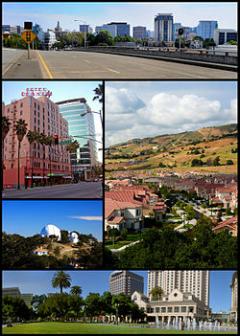

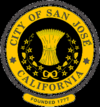
San Jose ( /ËusR¦n hoÊoËnzeɪ/; Spanish: St. Joseph) is the third-largest city in California, the tenth-largest in the U.S., and the county seat of Santa Clara County which is located at the southern end of San Francisco Bay. San Jose is the largest city within Silicon Valley, which is a major component of the greater San Francisco Bay Area, a region of 7.6 million people and the sixth largest metropolitan area (CSA) in the United States. It is also the most populous city in Northern California.
/ËusR¦n hoÊoËnzeɪ/; Spanish: St. Joseph) is the third-largest city in California, the tenth-largest in the U.S., and the county seat of Santa Clara County which is located at the southern end of San Francisco Bay. San Jose is the largest city within Silicon Valley, which is a major component of the greater San Francisco Bay Area, a region of 7.6 million people and the sixth largest metropolitan area (CSA) in the United States. It is also the most populous city in Northern California.
San Jose was founded on November 29, 1777, as El Pueblo de San Jose de Guadalupe, the first civilian town in the Spanish colony of Nueva California, which later became Alta California. The city served as a farming community to support Spanish military installations at San Francisco and Monterey. When California gained statehood in 1850, San Jose served as its first capital.
After more than 150 years as a small farming city, San Jose and the surrounding Santa Clara Valley became the last (and largest) contiguous area of undeveloped land surrounding the San Francisco Bay. San Jose experienced increased demand for housing from soldiers and veterans returning from World War II. San Jose then continued its aggressive expansion during the 1950s and 1960s by annexing more land area. The rapid growth of the high-technology and electronics industries further accelerated the transition from an agricultural center, to an urbanized metropolitan area.
By the 1990s, San Jose's location within the booming local technology industry earned the city its nickname, Capital of Silicon Valley. San Jose now maintains global city status and is the largest city in the San Francisco Bay Area in terms of population, land area, and industrial development.The U.S. Census Bureau reported the population of the city to be 945,942 as of the 2010 Census. As of January 2012 the California Department of Finance estimated the population of San Jose as 971,372.
San Jose, along with the Santa Clara Valley, experienced about half a century of spectacular suburban sprawl, with characteristics of intense urbanization similar to the Los Angeles area of Southern California. The city has taken definite steps to avoid becoming "L.A. North".
Spanish Empire 1781 ae1821
Prior to European settlement, the area was inhabited by several groups of Ohlone Native Americans. The first lasting European presence began with a series of Franciscan missions established from 1769 by Father JunRpero Serra. On orders from Antonio MarRa de Bucareli y UrsRºa, Spanish Viceroy of New Spain, San Jose was founded by Lieutenant Jose JoaquRn Moraga as Pueblo de San Jose de Guadalupe (in honor of Saint Joseph) on November 29, 1777, to establish a farming community. The town was the first civil settlement in Alta California.
In 1797, the pueblo was moved from its original location, near the present-day intersection of Guadalupe Parkway and Taylor Street, to a location in what is now Downtown San Jose. San Jose came under Mexican rule in 1821 after Mexico broke with the Spanish crown. It then became part of the United States, after it capitulated in 1846 and California was annexed. Soon afterwards, on March 27, 1850, San Jose became the second incorporated city in the state (after Sacramento), with Josiah Belden its first mayor. The town was the state's first capital, as well as host of the first and second sessions (1850 ae1851) of the California Legislature. Today the Circle of Palms Plaza in downtown is the historical marker for the first state capital.
Though not impacted as severely as San Francisco, San Jose suffered damage from the 1906 San Francisco earthquake. Over 100 people died at the Agnews Asylum (later Agnews State Hospital) after its walls and roof collapsed, and the San Jose High School's three-story stone-and-brick building was also destroyed. The period during World War II was a tumultuous time. Japanese Americans primarily from Japantown were sent to internment camps, including the future mayor, Norman Mineta. Following the Los Angeles zoot suit riots, anti-Mexican violence took place during the summer of 1943. In 1940, the Census Bureau reported San Jose's population as 98.5% white. The entire region prepared for the beginning of the war.
As World War II started, the city's economy shifted from agriculture (the Del Monte cannery was the largest employer) to industrial manufacturing with the contracting of the Food Machinery Corporation (later known as FMC Corporation) by the United States War Department to build 1000 Landing Vehicle Tracked. After World War II, FMC (later United Defense, and currently BAE Systems) continued as a defense contractor, with the San Jose facilities designing and manufacturing military platforms such as the M113 Armored Personnel Carrier, the Bradley Fighting Vehicle, and various subsystems of the M1 Abrams. IBM established its West Coast headquarters in San Jose in 1943 and opened a downtown research and development facility in 1952. Both would prove to be harbingers for the economy of San Jose, as Reynold Johnson and his team would later invent RAMAC, as well as the Hard disk drive, and the technological side of San Jose's economy grew.
During the 1950s and 1960s, city manager A. P. "Dutch" Hamann led the city in a major growth campaign. The city annexed adjacent areas, such as Alviso and Cambrian Park, providing large areas for suburbs. An anti-growth reaction to the effects of rapid development emerged in the 1970s championed by mayors Norman Mineta and Janet Gray Hayes. Despite establishing an urban growth boundary, development fees, and incorporations of Campbell and Cupertino, development was not slowed, but rather directed into already incorporated areas. San Jose's position in Silicon Valley triggered more economic and population growth, which led to the highest housing costs increase in the nation, 936% between 1976 and 2001. Efforts to increase density continued into 1990s when an update of the 1974 urban plan kept the urban growth boundaries intact and voters rejected a ballot measure to ease development restrictions in the foothills. Sixty percent of the housing built in San Jose since 1980 and over three-quarters of the housing built since 2000 have been multifamily structures, reflecting a political propensity toward Smart Growth planning principles.
On April 3, 1979, the San Jose City Council adopted San Jose, with the diacritical mark on the "e", as the spelling of the city name on the city seal, official stationery, office titles and department names. Also, by city council convention, this spelling of San Jose is used when the name is stated in both upper- and lower-case letters, but not when the name is stated only in upper-case letters. The accent reflects the Spanish version of the name, and the dropping of accents in all-capital writing was typical in Spanish. The name is still more commonly spelled without the diacritical mark as San Jose. The official name of the city remains City of San Jose with no diacritical mark, according to the City Charter. However, the City's website uses San Jose.
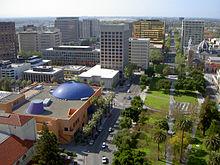

San Jose is located at 37 °20 a²07 a³N 121 °53 a²31 a³W / 37.335278 °N 121.891944 °W / 37.335278; -121.891944.
According to the United States Census Bureau, the city has a total area of 180.0 square miles (466 km2), of which 3.4 square miles (8.9 km ²; 1.91%) is water.
San Jose lies between the San Andreas Fault, the source of the 1989 Loma Prieta earthquake, and the Calaveras Fault. San Jose is shaken by moderate earthquakes, above four on the Richter Scale, on average of one to two times a year. These quakes originate just east of the city on the creeping section of the Calaveras Fault, which is a major source of earthquake activity in Northern California. On April 14, 1984, at 1:15 pm, local time a 6.2 magnitude earthquake struck the Calaveras Fault near San Jose's Mount Hamilton. The most serious earthquake, in 1906, damaged many buildings in San Jose as described earlier. Earlier significant quakes rocked the city in 1839, 1851, 1858, 1864, 1865, 1868, and 1891. The Daly City Earthquake of 1957 caused some damage. The Loma Prieta earthquake of 1989 also did some damage to parts of the city. The other faults near San Jose are the Monte Vista Fault and the Hayward Fault Zone.
The Guadalupe River runs from the Santa Cruz Mountains (which separate the South Bay from the Pacific Coast) flowing north through San Jose, ending in the San Francisco Bay at Alviso. Along the southern part of the river is the neighborhood of Almaden Valley, originally named for the mercury mines which produced mercury needed for gold extraction from quartz during the California Gold Rush as well as mercury fulminate blasting caps and detonators for the U.S. military from 1870 to 1945. East of the Guadalupe River, Coyote Creek also flows to south San Francisco Bay and originates on Mount Sizer near Henry W. Coe State Park and the surrounding hills in the Diablo Range, northeast of Morgan Hill, California.
The lowest point in San Jose is 13 feet (4 m) below sea level at the San Francisco Bay in Alviso; the highest is 2,125 feet. Due to the proximity to Lick Observatory atop Mount Hamilton, San Jose has taken several steps to reduce light pollution, including replacing all street lamps and outdoor lighting in private developments with low pressure sodium lamps. To recognize the city's efforts, the asteroid 6216 San Jose was named after the city.
San Jose lies close to the Pacific Ocean and close to San Francisco Bay (a small portion of its northern border touches the bay). Santa Clara Valley is the population center of the Bay Area, and like the hub and spokes of a wheel, surrounding communities emanate outwards from the valley. This growth in part, has shaped the greater Bay Area as it is today in terms of geographic population distribution and the trend of suburbanization away from the valley.
There are four distinct valleys in the city of San Jose: Almaden Valley, situated on the south-west fringe of the city; Evergreen Valley to the south-east, which is hilly all throughout its interior; Santa Clara Valley, which includes the flat, main urban expanse of the South Bay; and the rural Coyote Valley, to the city's extreme southern fringe.
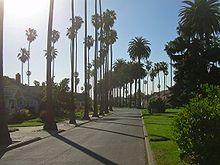
San Jose, like most of the Bay Area, has a Subtropical Mediterranean climate. San Jose has 300+ days of sunshine and an average daily high temperature of 73 °F (23 °C) annually. Although San Jose lies inland and does not front the Pacific Ocean like San Francisco, it is surrounded on three sides by mountains. Because of this, the city is somewhat more sheltered from rain, giving it a semiarid feel with a mean annual rainfall of 14.4 inches (366 mm), compared to some other parts of the Bay Area, which can get about three times that amount.
January's average high is 60 °F (16 °C) and average low is 42 °F (6 °C). July's average high is 84 °F (29 °C) and average low is 57 °F (14 °C). The highest temperature ever recorded in San Jose was 114 °F (46 °C) in June 1961; the lowest was 20 °F ( na7 °C) in December 1990. Temperature fluctuations between night and day can vary as little as 10 °F to 12 °F (a fluctuation range of 5.5 °C to 6.6 °C), meaning that its climate does not experience huge temperature drops or rises like some other parts of California.
With the light rainfall, San Jose and its suburbs experience about 300 full or partly sunny days a year. Rain occurs primarily in the months from November through April or May. During the winter and spring, hillsides and fields turn green with grasses and vegetation, although deciduous trees are few. With the coming of the annual hot summer dry period, the vegetation dies and dries, giving the hills a golden cover, which unfortunately also provides fuel for frequent grass fires.
Measurable precipitation falls in downtown San Jose on an average of 50 days a year. Annual precipitation has ranged from 6.12 inches (155 mm) in 1953 to 32.57 inches (827 mm) in 1983. The most precipitation in one month was 10.23 inches (260 mm) in February 1998. The maximum 24-hour rainfall was 3.60 inches (91 mm) on January 30, 1968. Although summer is normally quite dry in San Jose, a very heavy thunderstorm on August 21, 1968, brought 1.92-inch (49 mm) of rain, causing some flooding.
The snow level drops as low as 2,000 feet (610 m) above sea level, or lower, occasionally coating nearby Mount Hamilton, and less frequently the Santa Cruz Mountains, with snow that normally lasts a few days. This sometimes snarls traffic traveling on State Route 17 towards Santa Cruz. Snow rarely falls in San Jose; the most recent snow to remain on the ground was on February 5, 1976, when many residents around the city saw as much as 3 inches (7.6 cm) on car and roof tops. The official observation station measured only 0.5-inch (13 mm) of snow.
Like most of the Bay Area, San Jose is made up of dozens of microclimates. Downtown San Jose experiences the lightest rainfall in the city, while South San Jose, only 10 miles (16 km) distant, experiences more rainfall and somewhat more extreme temperatures.

The city is divided into several geographical regions. Many of these regions were originally unincorporated communities or separate municipalities that were later annexed by the city. The city is generally divided into the following areas: Downtown San Jose, Central, West San Jose, North San Jose, East San Jose, and South San Jose.
Some well-known communities within San Jose include Downtown San Jose, Japantown, Rose Garden, Sunol-Midtown, Willow Glen, Naglee Park, Burbank, West San Jose, Winchester, Alviso, East Foothills, Alum Rock, Little Portugal, Blossom Valley, Cambrian, Almaden Valley, Silver Creek Valley, Evergreen Valley, Edenvale, Santa Teresa, Seven Trees, Coyote Valley.
Important landmarks in San Jose include Children's Discovery Museum of San Jose, History Park at Kelley Park, Cathedral Basilica of St. Joseph, Plaza de Cesar ChR¡vez, Dr. Martin Luther King, Jr. Library, Mexican Heritage Plaza, Rosicrucian Egyptian Museum, Lick Observatory, Hayes Mansion, HP Pavilion at San Jose, De Anza Hotel, San Jose Improv, San Jose Municipal Stadium, Spartan Stadium, Japantown San Jose, Winchester Mystery House, Raging Waters, Circle of Palms Plaza, San Jose City Hall, San Jose Flea Market Oak Hill Memorial Park, and The Tech Museum of Innovation.

De Anza Hotel

HP Pavilion at San Jose

Cathedral Basilica of Saint Joseph

Lick Observatory

Mount Hamilton

Hayes Mansion

Plaza de Cesar ChR¡vez

Rosicrucian Egyptian Museum

Winchester Mystery House

Kelley Park

Dr. Martin Luther King, Jr. Library
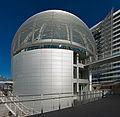
San Jose City Hall

Fairmont San Jose Hotel

Circle of Palms Plaza

Spartan Stadium
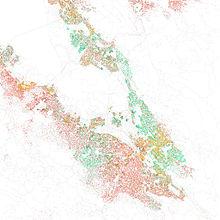

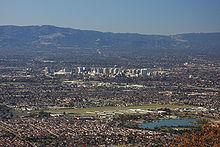
The 2010 United States Census reported that San Jose had a population of 945,942. The population density was 5,256.2 people per square mile (2,029.4/km ²). The racial makeup of San Jose was 404,437 (42.8%) White, 303,138 (32.0%) Asian (10.4% Vietnamese, 6.7% Chinese, 5.6% Filipino, 4.6% Indian, 1.2% Korean, 1.2% Japanese, 0.3% Cambodian, 0.2% Thai, 0.2% Pakistani, 0.2% Laotian), 30,242 (3.2%) African American, 8,297 (0.9%) Native American, 4,017 (0.4%) Pacific Islander, 148,749 (15.7%) from other races, and 47,062 (5.0%) from two or more races. Hispanic or Latino of any race were 313,636 persons (33.2%). Among the Hispanic population, 28.2% are Mexican, 0.7% Salvadoran, 0.5% Puerto Rican, and 0.3% Nicaraguan. Non-Hispanic Whites were 28.7% of the population in 2010, down from 60.4% in 1970.
The Census reported that 932,620 people (98.6% of the population) lived in households, 9,542 (1.0%) lived in non-institutionalized group quarters, and 3,780 (0.4%) were institutionalized.
There were 301,366 households, out of which 122,958 (40.8%) had children under the age of 18 living in them, 162,819 (54.0%) were opposite-sex married couples living together, 37,988 (12.6%) had a female householder with no husband present, 18,702 (6.2%) had a male householder with no wife present. There were 16,900 (5.6%) unmarried opposite-sex partnerships, and 2,458 (0.8%) same-sex married couples or partnerships. 59,385 households (19.7%) were made up of individuals and 18,305 (6.1%) had someone living alone who was 65 years of age or older. The average household size was 3.09. There were 219,509 families (72.8% of all households); the average family size was 3.54.
The population was spread out with 234,678 people (24.8%) under the age of 18, 89,457 people (9.5%) aged 18 to 24, 294,399 people (31.1%) aged 25 to 44, 232,166 people (24.5%) aged 45 to 64, and 95,242 people (10.1%) who were 65 years of age or older. The median age was 35.2 years. For every 100 females there were 101.1 males. For every 100 females age 18 and over, there were 99.8 males.
There were 314,038 housing units at an average density of 1,745.0 per square mile (673.7/km ²), of which 176,216 (58.5%) were owner-occupied, and 125,150 (41.5%) were occupied by renters. The homeowner vacancy rate was 1.6%; the rental vacancy rate was 4.3%. 553,436 people (58.5% of the population) lived in owner-occupied housing units and 379,184 people (40.1%) lived in rental housing units.
As of the census of 2000, there were 894,943 people, 276,598 households, and 203,576 families residing in the city.
The population density was 5,117.9 people per square mile (1,976.1/km ²). There were 281,841 housing units at an average density of 1,611.8 per square mile (622.3/km ²). Of the 276,598 households, 38.3% had children under the age of 18 living with them, 56.0% were married couples living together, 11.7% had a female householder with no husband present, and 26.4% were non-families. 18.4% of all households were made up of individuals and 4.9% had someone living alone who was 65 years of age or older. The average household size was 3.20 and the average family size was 3.62.
In the city the population was spread out with 26.4% under the age of 18, 9.9% from 18 to 24, 35.4% from 25 to 44, 20.0% from 45 to 64, and 8.3% who were 65 years of age or older. The median age was 33 years. For every 100 females there were 103.3 males. For every 100 females age 18 and over, there were 102.5 males.
According to a 2007 estimate, the median income for a household in the city was the highest in the U.S. for any city with more than a quarter million residents with $76,963 annually. The median income for a family was $86,822. Males had a median income of $49,347 versus $36,936 for females. The per capita income for the city was $26,697. About 6.0% of families and 8.8% of the population were below the poverty line, including 10.3% of those under age 18 and 7.4% of those age 65 or over.
San Jose and the rest of the Bay Area is home to many Christian congregations, including large Roman Catholic and Eastern Orthodox churches, Mormons, and Jehovah's Witnesses, alongside centers of Jewish, Hindu, Islamic, Buddhist and Sikh faiths, among numerous other religious communities.
A high percentage of foreign-born residents (39.0% of the population) live in the city. These include many high-tech workers from East and South Asia, Eastern European immigrants, as well as poorer immigrants from Latin America, many of whom can be found in the large, multi-generational barrio Alum Rock district. San Jose has the largest Vietnamese population of any city in the world outside of Vietnam. The people from these countries have settled in the city and across the Santa Clara Valley primarily during the last three or four decades.
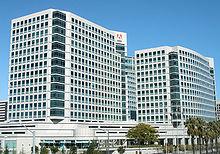
The large concentration of high-technology engineering, computer, and microprocessor companies around San Jose has led the area to be known as Silicon Valley. As the largest city in the valley, San Jose has billed itself "the capital of Silicon Valley." Area schools such as the University of California, Berkeley, University of California, Santa Cruz, San Jose State University, San Francisco State University, California State University, East Bay, Santa Clara University, and Stanford University pump thousands of engineering and computer science graduates into the local economy every year.
High economic growth during the tech bubble caused employment, housing prices, and traffic congestion to peak in the late 1990s. As the economy slowed in the early 2000s, employment and traffic congestion diminished somewhat. In the mid-2000s, traffic along major highways again began to worsen as the economy improved. San Jose had 405,000 jobs within its city limits in 2006, and an unemployment rate of 4.6%. In 2000, San Jose residents had the highest median household income of any city in the United States with a population over 300,000, and currently has the highest median income of any U.S. city with over 280,000 people.
San Jose lists many companies with 1,000 employees or more, including the headquarters of Adobe, Altera, Brocade Communications Systems, Cadence Design Systems, Cisco Systems, eBay, Lee's Sandwiches, Sanmina-SCI, and Xilinx, as well as major facilities for Becton Dickinson, Ericsson, Hewlett-Packard, Hitachi, IBM, Kaiser Permanente and KLA Tencor. Other large companies based in San Jose include Altera, Atmel, CEVA, Cypress Semiconductor, Echelon, Integrated Device Technology, Micrel, Netgear, Novellus Systems, Oclaro, Online Trading Academy, Quantum, SunPower, Supermicro, Tessera Technologies, TiVo, Ultratech, and VeriFone. Sizable government employers include the city government, Santa Clara County, and San Jose State University. Acer's United States division has its offices in San Jose. Prior to its closing, Netcom had its headquarters in San Jose.
The cost of living in San Jose and the surrounding areas is among the highest in California and the nation. Housing costs are the primary reason for the high cost of living, although the costs in all areas tracked by the ACCRA Cost of Living Index are above the national average. Despite the high cost of living in San Jose, households in city limits have the highest disposable income of any city in the U.S. with over 500,000 residents.
San Jose residents produce more U.S. patents than any other city. Thirty-five percent of all venture capital funds in the U.S. are invested in San Jose and Silicon Valley companies.
As of December 2011, the top employers in the city are:
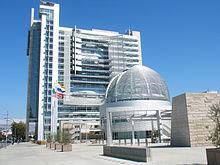
San Jose is a charter city under California law, giving it the power to enact local ordinances that may conflict with state law, within the limits provided by the charter. The city has a council-manager government with a city manager nominated by the mayor and elected by the city council.
The San Jose City Council is made up of ten council members elected by districts, and a mayor elected by the entire city. During city council meetings, the mayor presides, and all eleven members can vote on any issue. The mayor has no veto powers. Council members and the mayor are elected to four-year terms; the even-numbered district council members beginning in 1994; the mayor and the odd-numbered district council members beginning in 1996. Council members and the mayor are limited to two successive terms in office, although a council member that has reached the term limit can be elected mayor, and vice versa. The council elects a vice-mayor from the members of the council at the second meeting of the year following a council election. This council member acts as mayor during the temporary absence of the mayor, but does not succeed to the mayor's office upon a vacancy.
The City Manager is the chief administrative officer of the city, and must present an annual budget for approval by the city council. When the office is vacant, the Mayor proposes a candidate for City Manager, subject to council approval. The council appoints the Manager for an indefinite term, and may at any time remove the manager, or the electorate may remove the manager through a recall election. Other city officers appointed by the council are the City Attorney, City Auditor, City Clerk, and Independent Police Auditor.
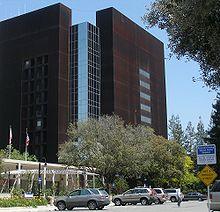
and like all cities and counties in the state, San Jose has representation in the state legislature.
Like all California cities except San Francisco, both the levels and the boundaries of what the city government controls are determined by the local county Local Agency Formation Commission (LAFCO). The goal of a LAFCO is to try to avoid uncontrolled urban sprawl. The Santa Clara County LAFCO has set boundaries of San Jose's "Sphere of Influence" (indicated by the blue line in the map near the top of the page) as a superset of the actual city limits (the yellow area in the map), plus parts of the surrounding unincorporated county land, where San Jose can, for example, prevent development of fringe areas to concentrate city growth closer to the city's core. The LAFCO also defines a subset of the Sphere as an 'Urban Service Area' (indicated by the red line in the map), effectively limiting development to areas where urban infrastructure (sewers, electrical service, etc.) already exists.
San Jose is the county seat of Santa Clara County. Accordingly, many county government facilities are located in the city, including the office of the County Executive, the Board of Supervisors, the District Attorney's Office, eight courthouses of the Superior Court, the Sheriff's Office, and the County Clerk.
San Jose is located in the 10th, 11th, 13th, and 15th Senate Districts, represented by Democrats Ellen Corbett, Joe Simitian, and Elaine Alquist, and Republican Abel Maldonado respectively, and in the 20th, 21st, 22nd, 23rd, 24th, 27th, and 28th Assembly districts, represented by Democrats Bob Wieckowski, Rich Gordon, Paul Fong, Nora Campos, Jim Beall, Bill Monning, and Anna M. Caballero respectively. Federally, San Jose is located in California's 14th, 15th, and 16th congressional districts, which have Cook PVIs of D +18, D +14, and D +16 respectively, and are represented by Democrats Anna Eshoo, Mike Honda, and Zoe Lofgren respectively.
Several state and federal agencies maintain offices in San Jose. The city is the location of the Sixth District of the California Courts of Appeal. It is also home to one of three courthouses of the United States District Court for the Northern District of California, the other two being in Oakland and San Francisco.
Crime in San Jose has been, and continues to be lower than in other large American cities. Like most large cities crime levels have fallen significantly after rising in the 1980s. Today it is ranked as one of the safest cities in the country with a population over 500,000 people. The designation is based on crime statistics reported to the Federal Bureau of Investigation in six categories: murder, rape, robbery, aggravated assault, burglary, and auto theft. As of 2009, the city had the second lowest violent crime rate of any city with 500,000 or more residents, second only to Honolulu. However in 2011, homicides have surged surpassing 2010's number of homicides which was 20 and in 2011 was 39.
Current mayor Chuck Reed is a member of the Mayors Against Illegal Guns Coalition, an organization formed in 2006 and co-chaired by New York City mayor Michael Bloomberg and Boston mayor Thomas Menino.
The Office of Economic Development coordinates the San Jose Sister City Program which is part of Sister Cities International. As of 2008, there are seven sister cities:

Because the downtown area is in the flight path to nearby Mineta San Jose International Airport (also evidenced in the above panoramic), there is a height limit for buildings in the downtown area, which is under the final approach corridor to the airport. The height limit is dictated by local ordinances, driven by the distance from the runway and a slope defined by Federal Aviation Administration regulations. Core downtown buildings are limited to approximately 300 feet (91 m) but can get taller farther from the airport. There has been broad criticism over the past few decades of the city's architecture. Citizens have complained that San Jose is lacking in aesthetically pleasing architectural styles. Blame for this lack of architectural "beauty" can be assigned to the re-development of the downtown area from the 1950s onward, in which whole blocks of historic commercial and residential structures were demolished. Exceptions to this include the Downtown Historic District, the De Anza Hotel, and the Hotel Sainte Claire, both of which are listed in the National Register of Historic Places for their architectural and historical significance.
Municipal building projects have experimented more with architectural styles than have most private enterprises. The Children's Discovery Museum, Tech Museum of Innovation, and the San Jose Repertory Theater building have experimented with bold colors and unusual exteriors. The new City Hall, designed by Richard Meier & Partners opened in 2005 and is a notable addition to the growing collection of municipal building projects.
Public art is an evolving attraction in the city. The city was one of the first to adopt a public art ordinance at 2% of capital improvement building project budgets, and the results of this commitment are beginning to have an impact on the visual landscape of the city. There are a considerable number of public art projects throughout the downtown area, and a growing collection in the newer civic locations in neighborhoods including libraries, parks, and fire stations. Of particular note, the Mineta Airport expansion is incorporating a program of Art & Technology into its development.
Within the early efforts at public art, there are notable controversies. Two examples include the statue of Quetzalcoatl (the plumed serpent) in downtown which was controversial in its planning because some religious groups felt that it was pagan, and controversial in its implementation because many felt that the final statue by Robert Graham did not closely resemble a winged serpent, and was more noted for its expense than its aesthetics. This has resulted in locals joking that the statue resembles a pile of feces.
The statue of Thomas Fallon also met strong resistance from those who felt that people like him were largely responsible for the decimation of early native populations and Chicano/Latino activists protested he captured San Jose by violent force in the Mexican-American war (1846) as well "repressed" historic documents of Fallon ordered the expulsion of most of the city's Californio (early Spanish or Mexican) residents. In October 1991 after protests in part of Columbus Day and Dia de la Raza celebrations, the Fallon statue plan was scrapped and the statue was stored in a warehouse in Oakland for more than a decade. The statue was returned to public display in 2002, albeit in a less conspicuous location: Pellier Park, a small triangular patch formed by the merge of West Julian and West St. James streets.
In 2001, the city sponsored SharkByte, an exhibit of decorated sharks, based on the mascot of the hockey team, the San Jose Sharks, and modeled after Chicago's display of decorated cows. Large models of sharks were decorated in a variety of clever, colorful, or creative ways by local artists and were then displayed for months at dozens of locations around the city. Many displays were removed early because of vandalism. After the exhibition, the sharks were auctioned off and the proceeds donated to charity. The sharks can still be found in their new owners' homes and businesses.
In 2006, Adobe Systems commissioned an art installation titled San Jose Semaphore by Ben Rubin, which is located at the top of its headquarters building. Semaphore is composed of four LED discs which "rotate" to transmit a message. The content of the San Jose Semaphore aos message remained a mystery until it was deciphered in August 2007. The visual art installation is supplemented with an audio track, transmitted from the building on a low-power AM station. The audio track provides clues to decode the message being transmitted.
The city is home to many performing arts companies, including Opera San Jose, Symphony Silicon Valley, Ballet San Jose Silicon Valley, Children's Musical Theater of San Jose (recognized as the largest and most talented youth theatre company in the nation), the San Jose Youth Symphony, the San Jose Repertory Theatre, City Lights Theatre Company, The Tabard Theatre Company, San Jose Stage Company, and the now-defunct American Musical Theatre of San Jose which was replaced by Broadway San Jose in partnership with Team San Jose. San Jose also is home to the San Jose Museum of Art, one of the nation's premiere Modern Art museums. The annual Cinequest Film Festival in downtown has grown to over 60,000 attendees per year, becoming an important festival for independent films. The San Francisco Asian American Film Festival is an annual event, which is hosted in San Francisco, Berkeley, and Downtown San Jose. Approximately 30 to 40 films are screened in San Jose each year at the Camera 12 Downtown Cinemas. The San Jose Jazz Festival is another of many great events hosted throughout the year.
The HP Pavilion at San Jose is one of the most active venues for events in the world. According to Billboard Magazine and Pollstar, the arena sold the most tickets to non-sporting events of any venue in the United States, and third in the world after the Manchester Evening News Arena in Manchester, England, and the Bell Centre in Montreal, Quebec, Canada, for the period from January 1 ae September 30, 2004. Including sporting events, the HP Pavilion averages 184 events a year, or roughly one event for every two days, which is significantly higher than the average for NHL arenas.
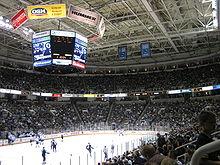
.

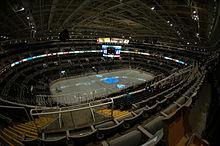
San Jose was able to have at least one major sports league franchise, the San Jose Sharks of the NHL, but the city tried to obtain a NBA basketball and Major League Baseball team before. The UFL of American football held the San Jose/California Redwoods team in 2009-10, but has relocated to Sacramento to become the Sacramento Mountain Lions the following year. San Jose was a founding member of both the California League and Pacific Coast Leagues, in minor league baseball, but currently the San Jose Giants of the class-A Cal League under the affiliation of the San Francisco Giants could move to the triple-A level PCL. The independent North American League formerly the Golden Baseball League held an interest in the Santa Clara Valley, most notably to have a team in Santa Clara where the city tried to catch the Giants and Oakland A's, and the NFL San Francisco 49ers in a rejected major league sports stadium proposal.
In 2004, the San Jose Sports Authority hosted the U.S. Olympic team trials for judo, taekwondo, trampolining and rhythmic gymnastics at the San Jose State Event Center. In August 2004, the San Jose Seahawk Rugby Football Club hosted the USA All-Star 7-Aside Rugby Championships at Watson Bowl, east of Downtown. San Jose is also home to the St Joseph's Hurling Club. In 2008, around 90 percent of the members of the United States Olympic team were processed at San Jose State University prior to traveling to the 2008 Summer Olympics in Beijing. The 2009 Junior Olympics for trampoline also were held here. In April 2009, it was announced San Jose State will host the 2011 American Collegiate Hockey Association (ACHA) national tournament.

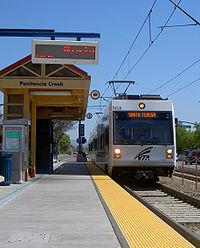
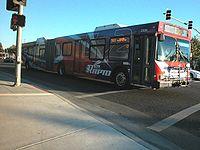
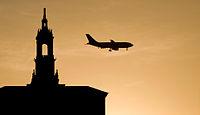
Rail service to and within San Jose is provided by Amtrak (the Sacramento aeSan-Jose Capitol Corridor and the Seattle aeLos-Angeles Coast Starlight), Caltrain (commuter rail service between San Francisco and Gilroy), ACE (commuter rail service to Pleasanton and Stockton), and a local light-rail system connecting downtown to Mountain View, Milpitas, Campbell, and Almaden Valley, operated by the Santa Clara Valley Transportation Authority (VTA). Historic streetcars from History Park operate on the light rail lines in downtown during holidays. Long-term plans call for BART to be expanded to Santa Clara through Milpitas and San Jose from the current terminal in Fremont. Originally, the extension was to be built all at once, but due to the recession, sales tax revenue has dramatically decreased. Because of this, the extension will be built in two phases. Phase 1 will extend service to a temporary terminal in north-eastern San Jose in 2018 at Berryessa station. Construction has been approved and funded and will begin in Summer 2012 and connect with the Warm Springs extension to southern Fremont. In addition, San Jose will be a major stop on the future California High Speed Rail route between Los Angeles and San Francisco. Diridon Station (formerly Cahill Depot, 65 Cahill Street) is the meeting point of all regional commuter rail service in the area. It was built in 1935 by the Southern Pacific Railroad, and was refurbished in 1994.
VTA also operates many bus routes in San Jose and the surrounding communities, as well as offering paratransit services to local residents. Additionally, the Highway 17 Express bus line connects central San Jose with Santa Cruz.
San Jose is served by Norman Y. Mineta San Jose International Airport (IATA: SJC, ICAO: KSJC, FAA LID: SJC), two miles (3 km) northwest of downtown, and by Reid-Hillview Airport of Santa Clara County (ICAO: KRHV, FAA LID: RHV) a general aviation airport located in the eastern part of San Jose. San Jose residents also use San Francisco International Airport (IATA: SFO, ICAO: KSFO, FAA LID: SFO), a major international hub located 35 miles (56 km) to the northwest, and Oakland International Airport (IATA: OAK, ICAO: KOAK, FAA LID: OAK), another major international airport located 35 miles (56 km) to the north. The airport is also near the intersections of three major freeways, U.S. Route 101, Interstate 880, and State Route 87.
The San Jose area has a large freeway system, including three Interstate freeways and one U.S. Route. It is, however, the largest city in the country not served by a primary Interstate; most of the Interstate Highway Network was planned by the early 1950s well before San Jose's rapid growth decades later.
U.S. 101 runs south to the California Central Coast and Los Angeles, and then runs north up near the eastern shore of the San Francisco Peninsula to San Francisco. I-280 also heads to San Francisco, but goes along just to the west of the cities of San Francisco Peninsula. I-880 heads north to Oakland, running parallel to the southeastern shore of San Francisco Bay. I-680 parallels I-880 to Fremont, but then cuts northeast to the eastern cities of the San Francisco Bay Area.
Several state highways also serve San Jose: SR 17, SR 85, SR 87 and SR 237. Additionally, San Jose is served by a system of county-wide expressways, which includes the Almaden Expressway, Capitol Expressway, San Tomas Expressway, and Lawrence Expressway.
Several regional transportation projects have been undertaken in recent years to deal with congestion on San Jose freeways. This includes expansion of State Route 87 including more lanes near the downtown San Jose area. The interchange for I-280 connecting with I-680 and US 101, a rush-hour spot where the three freeways meet has been known to have high-density traffic similar to Los Angeles County interchanges.
A 2011 study by Walk Score ranked San Jose the nineteenth most walkable of fifty largest cities in the United States.
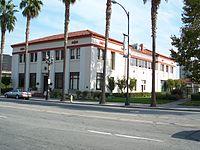
Potable water is provided primarily by the private-sector San Jose Water Company, with some by the Great Oaks Water Company, and ten percent by the public-sector San Jose Municipal Water System. Great Oaks provides exclusively well water, while the other two provide water from multiple sources, including well water, and surface water from the Los Gatos Creek watershed, Santa Clara Valley Water District, and the San Francisco Public Utilities Commission's Hetch Hetchy Reservoir.
Garbage, wastewater treatment, and recycling services are overseen by the city of San Jose's Environmental Services Department. San Jose recycles 64% of its waste, an exceptionally high percentage that is attributed to the recycling program's accepting an unusually long list of recyclable items without requiring that materials be sorted. Among the items accepted are all types of plastic, aerosol cans and paint cans, foam packing materials, aluminum furniture, small metal appliances, pots and pans, and clean fabrics.
Wastewater treatment happens at the San Jose/Santa Clara Water Pollution Control Plant, which treats and cleans the wastewater of more than 1,500,000 people that live and work in the 300+ square mile (780 km ²) area encompassing San Jose, Santa Clara, Milpitas, Campbell, Cupertino, Los Gatos, Saratoga, and Monte Sereno.
About ten percent of the treated wastewater is sold for irrigation ("water recycling") in San Jose, Santa Clara, and Milpitas, through local water providers San Jose Municipal Water System, City of Milpitas Municipal Services, City of Santa Clara Water & Sewer Utility, Santa Clara Valley Water District, San Jose Water Company, and Great Oaks Water Company.
PG&E provides residents natural gas and electricity service. Telephone communications are provided primarily by AT&T, and cable television is provided by Comcast. Internet services are provided by several companies, but primarily by Comcast and AT&T.
San Jose is home to several colleges and universities. The largest is San Jose State University, which was founded by the California legislature in 1862 as the California State Normal School, and is the founding campus of the California State University (CSU) system. Located in downtown San Jose since 1870, the university enrolls approximately 30,000 students in over 130 different bachelor's and master's degree programs. The school enjoys a good academic reputation, especially in the fields of engineering, business, art and design, and journalism, and consistently ranks among the top public universities in the western region of the United States. San Jose State is one of only three Bay Area schools that fields a Football Bowl Subdivision (FBS) Division I college football team; Stanford University and U.C. Berkeley are the other two.
National Hispanic University, with an enrollment of 600, offers associate and bachelor's degrees and teaching credentials to its students, focusing on Hispanic students.
California University of Management and Technology (CALMAT) offers many degree programs, including MBA, Computer Science, Information Technology. Most classes are offered both online and in the downtown campus. Many of the students are working professionals in the Silicon Valley.
Lincoln Law School of San Jose and University of Silicon Valley Law School offer law degrees, catering to working professionals.
National University maintains a campus in San Jose.
The San Jose campus of Golden Gate University offers business bachelor and MBA degrees.
San Jose's community colleges, San Jose City College, West Valley College, Mission College and Evergreen Valley College, offer associate degrees, general education units to transfer to CSU and UC schools, and adult and continuing education programs. The West campus of Palmer College of Chiropractic is also located in San Jose.
WestMed College is headquartered in San Jose and offers paramedic training, emergency medical technician training, and licensed vocational nursing programs.
The University of California, Santa Cruz operates Lick Observatory atop Mount Hamilton.
Additionally, San Jose residents attend several other area universities, including Santa Clara University, Stanford University in Palo Alto, Carnegie Mellon Silicon Valley in Mountain View and the University of California, Berkeley. San Jose and South Bay residents also comprise large proportions of the student bodies at major California public universities, including UC Santa Cruz, UC Davis, UC San Diego, and UC Riverside.
Up until the opening of Lincoln High School in 1943, San Jose students only attended San Jose High School. Some of the city's history is embedded within these two high schools, which hold a Thanksgiving Day high school football game, called the "Big Bone." As of 2010, there are 127 elementary, 47 middle, and 44 high schools, of which are all public. Public education in the city is provided by four high school districts, fourteen elementary districts, and four unified school districts (which provide both elementary and high schools).
In addition to the main San Jose Unified School District (SJUSD), other nearby unified school districts of nearby cities are Milpitas Unified School District, Morgan Hill Unified School District, and Santa Clara Unified School District.
Districts using the "feeder" system:
Prior to 1954, California law required cities and school districts to have the same boundaries. When San Jose began expanding, rural school districts became one of the major opponents, as their territory and tax base was taken by the city. The city's legislators pushed a bill through the California Legislature, removing that requirement, and ending much of the opposition. The result is a patchwork of local school districts in the areas annexed after 1954.
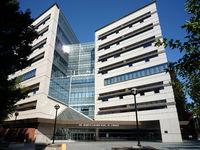
Private schools in San Jose are primarily run by religious groups. The Catholic Diocese of San Jose has the second largest student population in the Santa Clara County, behind only SJUSD; the diocese and its parishes operate several schools in the city, including six high schools: Archbishop Mitty High School, Bellarmine College Preparatory, Notre Dame High School, Saint Francis High School, St. Lawrence High School, and Presentation High School. Other private high schools not run by the Diocese include two Baptist high schools, Liberty Baptist School and White Road Baptist Academy, one Non-Denominational Protestant high school, Valley Christian High School (San Jose, California), and a nonsectarian K-12 Harker School west of the city in the Blackford neighborhood.
The San Jose Public Library system is unique in that the Dr. Martin Luther King, Jr. Library combines the collections of the city's system with the San Jose State University main library. In 2003, construction of the library, which now holds more than 1.6 million items, was the largest single library construction project west of the Mississippi, with eight floors that result in more than 475,000 square feet (44,100 m2) of space with a capacity for 2 million volumes.
The city has 21 neighborhood branches (17 of them open and not currently undergoing renovation or reconstruction) including the Biblioteca Latinoamericana which specializes in Spanish language works. The East San Jose Carnegie Branch Library, a Carnegie library opened in 1908, is the last Carnegie library in Santa Clara County still operating as a public library and is listed in the National Register of Historic Places. As the result of a bond measure passed in November 2000, a number of brand new or completely reconstructed branches have been completed and opened. The four branches currently undergoing construction are the Calabazas Branch, the Educational Park Branch, the Seventrees Branch, and the Bascom Branch and Community Center. The yet-to-be-named brand new Southeast Branch is also planned, bringing the bond library project to its completion.
The San Jose system (along with the University system) were jointly named as "Library of the Year" by the Library Journal in 2004.
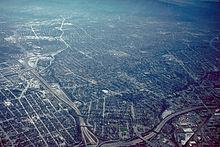
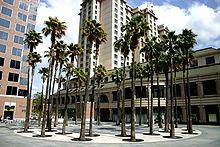

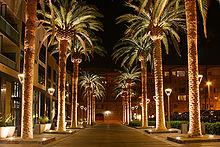
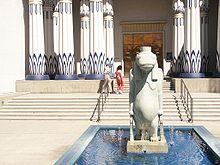
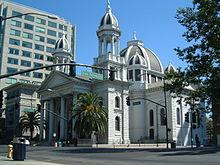
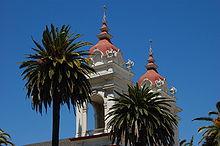
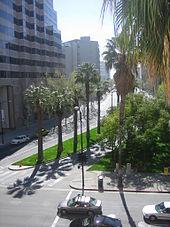
Early written documents record the local presence of migrating salmon in the ad'Rio Guadalupe' ao dating as far back as the 18th century. Both steelhead trout (Oncorhynchus mykiss) and King salmon are extant in the Guadalupe River, making San Jose the southernmost major U. S. city with known salmon spawning runs, the other cities being Anchorage, Alaska; Seattle, Washington; Portland, Oregon and Sacramento, California. Runs of up to 1,000 Chinook or King Salmon (Oncorhynchus tshawytscha) swam up the Guadalupe River each fall in the 1990s, but have all but vanished in the current decade apparently blocked from access to breeding grounds by impassable culverts, weirs and wide, exposed and flat concrete paved channels installed by the Santa Clara Valley Water District. In 2011 a small number of Chinook salmon were filmed spawning under the Julian Street bridge.
San Jose's trail network offers over 53 miles (90 km) of recreational and commute trails throughout the City. The major trails in the network include:
This large urban trail network, recognized by Prevention Magazine as the nation's largest, is linked to trails in surrounding jurisdictions and many rural trails in surrounding open space and foothills.
San Jose is served by Greater Bay Area media. Print media outlets in San Jose include the San Jose Mercury News, the weekly Metro Silicon Valley, El Observador and the Silicon Valley / San Jose Business Journal. Broadcasters include 34 television stations, 25 AM radio stations, and 55 FM radio stations.
In April 1909, Charles David Herrold, an electronics instructor in San Jose, constructed a radio station to broadcast the human voice. The station "San Jose Calling" (call letters FN, later FQW), was the world's first radio station with scheduled programming targeted at a general audience. The station became the first to broadcast music in 1910. Herrold's wife Sybil became the first female "disk jockey" in 1912. The station changed hands a number of times before eventually becoming today's KCBS in San Francisco. Therefore KCBS technically is the oldest radio station in the United States, and celebrated their 100th anniversary in 2009 with much fanfare.


Word Count: 8785






